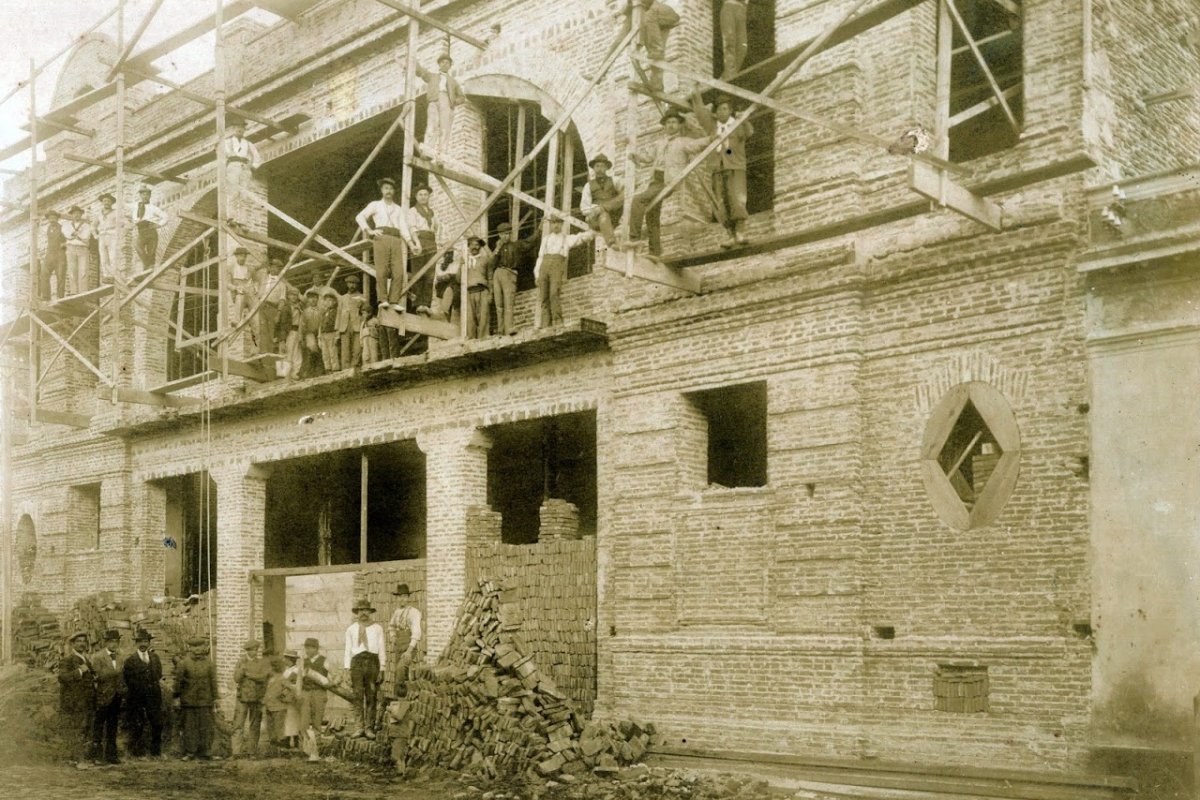By 1908, possibly inspired by the opening of the Colón Theater in the city of Buenos Aires, there was talk in Gualeguaychú about the need to have a room according to the needs and tastes of the time.
In 1910, by Municipal Decree, several residents of the city were appointed to form the Commission whose objective was to create the Public Limited Company that later carried out the construction of our theater. The $ 200,000 shares were purchased by around 70 neighbors.
Finally, on June 11, 1914 it opened its doors and for many years the city had this cultural space. The passage of time and very varied situations led to the abandonment and gradual deterioration of such a majestic construction.
But this story has a happy ending, since the Gualeguaychú Theater, after its restoration and enhancement, is the great pride of our city.
–
During the recovery process, for example, old packages of sweets, cigarettes and other curiosities were found under the steps of paradise, which were rescued along with valuable programs that are now part of the Municipal Archive. And given the characteristics of the place where they had remained for so many years, these documents were in a very poor state of preservation.
Thus it was that from the Chair of Institutional Definition Space “Conservation of Artistic and Cultural Works”, of the Technician in Plastic Arts, of the Higher Institute of Art, in charge of the museologist Natalia Derudi, cataloging and cataloging works were carried out for several consecutive years. conservation of these documents, of incalculable value for the reconstruction of the history of theater and culture in our city.
At present, the pandemic situation and its protocols have modified the traditional agenda of the room, giving way to innovative virtual activities of an express nature, with the room empty and the public from their seats in their homes.
Today streaming, and previously recorded activities prevail on the stage of the hall, although when the health situation allows it, functions are carried out with an audience present, in a capacity reduced to 30 percent.
The Theater celebrates one more year together with the cultural expressions that constitute our symbolic heritage, for the growth of our Cultures.
Gualeguaychú Theater
Founded by a group of neighbors and declared a historic monument by the National Government, the solid centennial building was inaugurated on June 11, 1914 with Verdi’s Opera “Aída”. Large companies of theater, music, ballet, etc. performed on its stage.
It has a horseshoe floor plan, surrounded by a row of low boxes, a row of casseroles and another row of gathering (to be restored), maintains a rigid axis of symmetry and has a pit for the orchestra. It has capacity for 600 people distributed in 382 stalls with low boxes included and 218 in a casserole including high silver boxes.
Of the total of 600 locations, the municipality has 20 locations for the “all to the theater” program implemented through the Directorate of Culture.
Its facade is symmetrical, flat and elegant, with balconies with balusters and ironwork, the formal sobriety predominates with a certain severity. Its architecture is closer to the current known as “Viennese Secession”.
Since December 22, 1994 it has been administered by the Municipality. In 1997 it was declared a National Historic Monument and on April 9, 2011, thanks to the efforts made by the National, Provincial and Municipal Government, it reopened its doors after three years of intense recovery and restoration work.
Today it is the place par excellence for artists, where theater, dance and music stand out on its 11-meter wide stage by 10 meters deep, a scenography grill that contains three automated lighting rods and three for hanging from alternative backdrops.
A true architectural work that is also listed as one of the best in the country in terms of acoustics.
–


